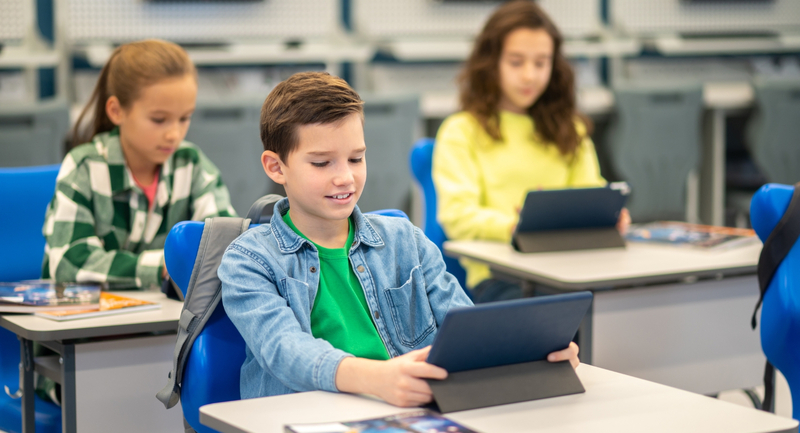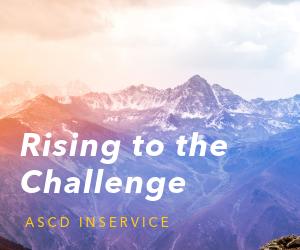How we built a brotherhood of scholars by providing culturally relevant texts and successful role models to emulate.
Throughout the 2019-2020 school year, I worked closely with the African American males at Woodside High in Newport News, Virginia, where I’m an assistant principal. A team I led created a mentorship group for these young men needing academic and social-emotional support, which included weekly mentorship meetings, field trips, and community service projects.
In just a short time, these students showed improvements in their grades, attendance, and overall commitment to becoming college-, career-, and citizen-ready. I felt proud of the steps they took to challenge the narrative of low achievement that often surrounds Black males. I was enthusiastic and optimistic. And then on March 13, 2020, our school closed because of COVID-19.
Although our building doors were shuttered, the learning had to continue. I imagined we could evolve our original mentorship program into a four-week summer reading program for African American males that would serve two purposes: 1) foster these youths’ literacy development, and 2) showcase the power of mentorship by giving them an opportunity to connect with male role models from the community, as well as develop networks with peers. Alfred Tatum has stressed the importance of engaging African American males in reading, noting that it’s essential to build a literacy bridge for them because literacy is the key to overall academic and life success. I also knew partnerships with successful Black men would create a support system for these students on their journey to empowerment and becoming leaders in their schools and communities.
So, with a team of colleagues, I created the “Boys Read, Too” Summer Reading Program, which served 35 African American male students in the summer of 2020. These students weren’t all from my school; some were from other areas, including Rockdale County Public Schools in Georgia, Charlotte-Mecklenburg Public Schools in North Carolina—and even a district in Texas.
In hopes of inspiring others, here are the basics of the program and practices that helped ensure that students in Boys Read, Too had an enriching academic and social experience.
A Brotherhood of Scholars
The young men read and discussed culturally relevant, male-centered texts. Each week, they were assigned a text that embodied such themes as civil rights, goal setting, passion, love, and gratitude. Texts included Dear Basketball, an essay published by Kobe Bryant when he retired; Learning to Read, excerpted from Malcolm X’s autobiography; "Your Life’s Blueprint," a speech by Martin Luther King, Jr.; and Langston Hughes’s poem “I Too.”
We scaffolded these readings by having students answer reading-reflection questions and write in journals. One very important aspect of the program was the weekly Zoom sessions facilitated by prominent African American male role models from the community. These older men engaged the young men in discussion and critical thinking about core elements of each text. Each facilitator encouraged the young men to “speak up” and let their voice be heard; they emphasized elaborating on one’s thinking and connecting the text to life experiences. Our mentors set high expectations and built community.
Another element to the program was the Sunday “Fireside Chats” we held, in which we shared effective reading strategies. We also shared information about each facilitator and their impact on the community and sent a weekly “check-in” email. In that message, we previewed the text we’d be reading next and reading reflection questions, as well as a word of affirmation to encourage the young men.
At the end of four weeks, the growth we saw was remarkable. A brotherhood of scholars was created. Combining relationships, instructional best practices, relevant reading materials, and a safe learning environment allowed for great teaching and learning to occur even in a virtual environment.
Takeaway Lessons
Notable “takeaways” from Boys Read, Too centered around instructional practices that can be a blueprint for teaching African American males. Here are three key ones:
1. Select text that enhances rigor. Often the term rigor is associated with assigning more and harder work, or assigning work in a harsh, inflexible way. I decided that, for our participants, rigor would mean something different. Allen noted that academic rigor should encourage students to create their own meaning from what they read and allow them to integrate what they learned to new and novel situations. The way we set up engaging with texts required the participants to actively engage with books, essays, and poems through reading, writing, and critically thinking about the ideas and themes.
I intentionally chose texts that were ambiguous, provocative, paradoxical, and dealt with social-emotional issues in challenging ways. These readings allowed the young men to think for themselves and seek broader connections.
2. Choose transformative facilitators. The facilitators who led the sessions exemplified the transformative power of an effective teacher—one who establishes positive relationships, has an enthusiasm for teaching and learning, and inspires students to share their voice. The program featured a talented cohort of men with a track record of mentoring youth, including (among others) Tommy Reamon , Jr. (owner of the City On My Chest clothing line), professional football player Antoine Bethea, and Newport News City Councilman Marcellus Harris III. These men met the students where they were and empowered them to achieve their full potential. In selecting men to mentor in a literacy effort, consider:
- Does the person embrace the importance of providing formal and informal mentoring and enrichment experiences for African American males?
- Does the person have a passion for literacy and literacy instruction, using both as a bridge to encourage young men to embrace reading?
- Does the person show commitment to what I call the moral imperative of education? This means serving as an agent of change and shifting the paradigm of how marginalized students are viewed and the experiences afforded to them.
3. Trust the power of relationships and high expectations. I have a core belief that if we create a safe learning environment based on positive relationships and high expectations, students will thrive. We acted on this philosophy through student-centered approaches, like daily affirmations, weekly mentoring and discussion sessions, Sunday night check-ins, and team-building activities. Staff and participants rallied around the phrase “all in.” We were committed to reading each text, actively participating in the sessions, and showcasing our best work. This phrase established a collective consciousness and forged a bond.
Igniting Love for Reading—and Confidence
The young men involved in Boys Read, Too reported to us that the program allowed them to regain their love for reading, gave them an opportunity to work with peers to generate ideas and solutions for real-word problems, and helped them realize they have the skills to be leaders. In the words of participant Jordan Moody:
The program gave me the confidence to be a leader and use my voice as a tool that can impact the community.
One parent of an involved teen told me:
My son has never shown interest in reading until attending his first Boys Read, Too program. What you and your team execute . . . has transformed my reluctant reader.
In retrospect, Boys Read, Too reflected the well-known Margaret Mead quote:
Never doubt that a small group of thoughtful, committed citizens can change the world. Indeed, it is the only thing that ever has.
Much has been said about the negative impact COVID-19 has had on achievement and how it will exacerbate learning gaps. As an educator, I wanted to provide at least one solution. My approach was simple: to create a (virtual) opportunity for students to access reading and thinking by connecting them to texts relevant to their gender, lives, and interests—and supporting them with powerful relationships and mentoring. This approach set the stage for high-impact learning—and it happened.
This post is adapted with permission from SchoolRubric. Read the original version here.








